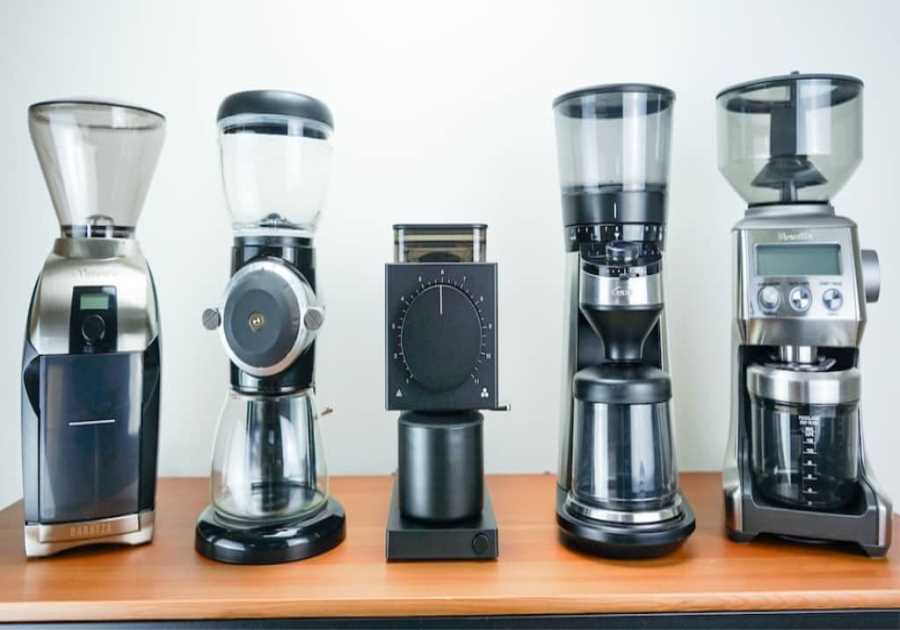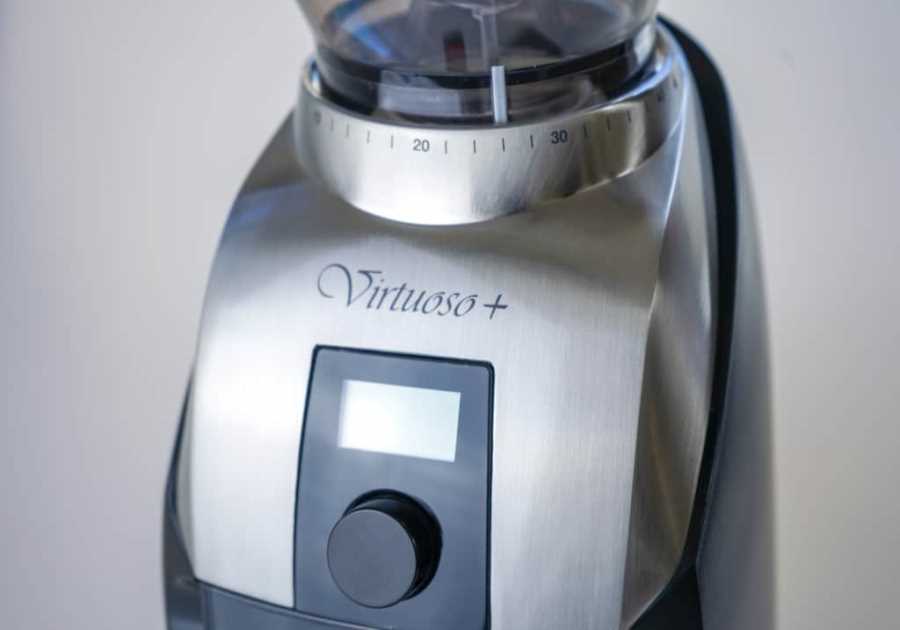Cold brew has quickly become one of the most popular ways to drink coffee. Today, you can find it in most supermarkets, and it is easy enough to make at home without investing in expensive brewing equipment.
While most cold brew drinkers will be happy to drink the beverage as is, more and more cold brew brands and industry professionals have worked on ageing techniques that can offer customers a slightly different flavour profile.
I spoke to two representatives from cold brew brands to find out more about some of the methods they use to add an extra dimension to their coffee. Read on to learn more.
You may also like our article on the quality of coffee liqueurs and spirits.
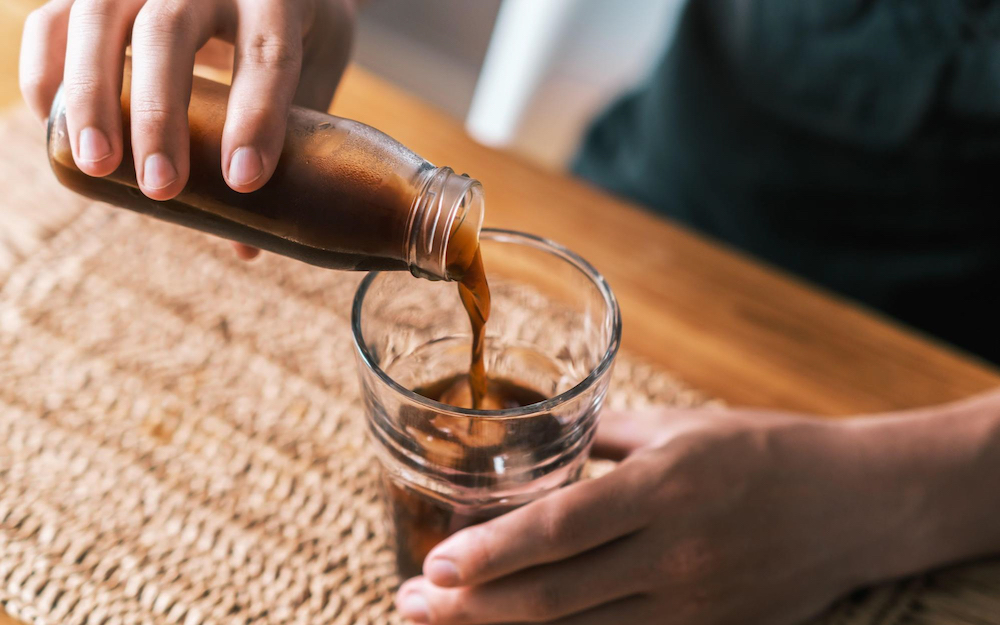
Understanding the flavour of cold brew
There are several ways of making cold brew, but all methods typically involve immersing coarse coffee grounds in cold or room temperature water. Because of the lower temperatures, the soluble flavour compounds extract much more slowly than in coffee brewed with hot water.
When properly prepared, cold brew is smoother, sweeter, and far less acidic than a typical hot coffee. It’s usually made in large quantities, often as a concentrate, and takes between 12 to 24 hours to brew.
For many consumers, this is the product they know and enjoy. However, much like how a hot cup of coffee’s flavour evolves as it cools down, the flavours in cold brew coffee actually change significantly over time.
Andrew Harris is the owner of The DripLab, currently based in Noosa, Australia, where he’s been experimenting with cold brew for many years. During this period, he’s extensively documented how flavours change over time.
“There’s a bit of a shift that happens when you make cold brew,” he explains. “The next day after you have extracted the coffee, it is quite light and thin. There’s not a lot of body to it.”
However, he adds that if you let it rest for a few days to a week, it thickens considerably and the structure changes.
“You get a really syrupy mouthfeel,” he says. “All of this got me thinking: how far can you take it, how can you influence the ageing, and then what can you use it for?”

Cold brew in cafés: Choosing the right coffee
As it can be prepared in batches, cold brew has the potential to make customer service much more efficient, especially in warmer months.
Cold brew can even be used as a concentrate and deployed in a similar way to espresso, where it serves as a base for other drinks (often iced beverages).
“In a café setting, you can use it to make iced lattes, or just drink it black,” Andrew notes. “We find you could keep it for around ten days and still have a really good product that is pretty stable and consistent.”
However, just like it would for espresso or filter, the coffee you use when making cold brew will ultimately have an effect on its flavour profile.
When it comes to origin, Andrew says he typically uses a blend if the cold brew is for iced lattes. If it’s being served black, he prefers to use a single origin coffee.
He also notes that the changes that cold brew takes on over time can mean it turns into something unique.
“I have aged some cold brew for a very long time,” he says. “We’ve got a couple of guys up in Queensland who have been playing around for a few years now, and the longest we had the product sitting there for was a year and a half. It was still good, but it kind of goes a bit like a whiskey.”
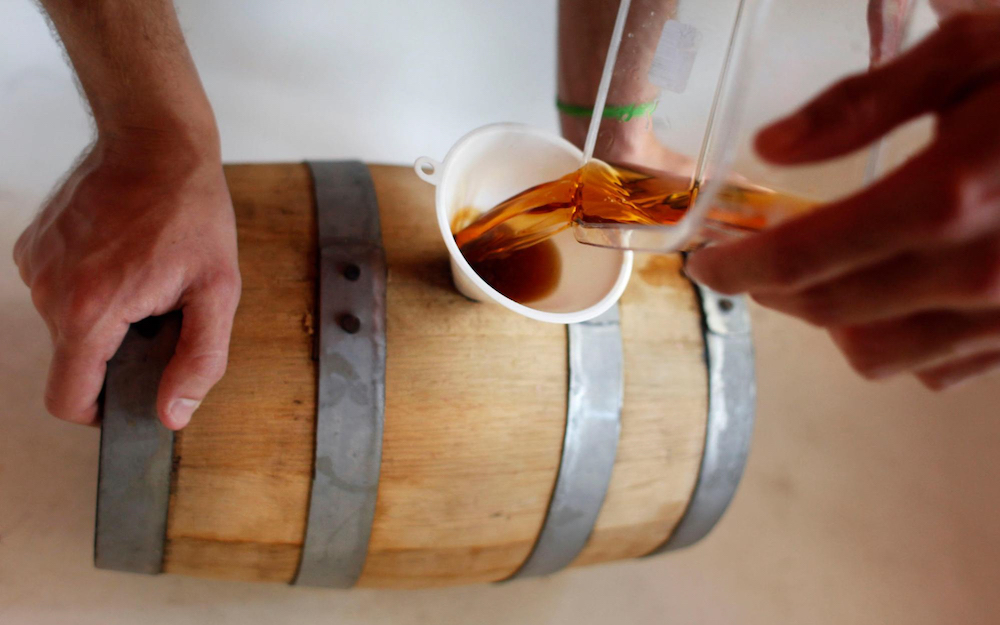
Barrel-ageing cold coffee beverages
We know that cold brew can be manipulated to induce changes in the drink. One simple way to do this is to age it in a specific type of vessel.
Craig Brady has been experimenting with coffee for many years and has developed several cold coffee beverages with his business, Brady’s Coffee Company.
While Brady’s has recently changed its process for barrel-ageing cold brew, Craig explains that the company ages green coffee in whiskey barrels. This infuses the coffee with the flavour of both the spirit and the wood itself when it is brewed, creating a unique flavour profile.
“We have 50 whiskey barrels in our warehouse here, all full of coffee,” he says. “We age our coffee in Irish whiskey barrels, and we’re the largest producer of barrel-aged Irish whiskey coffee in the world.”
His company took advantage of the number of distilleries nearby that were looking to offload their spent barrels. After trying various types of coffee to find the one that worked best in the process, Craig settled on one origin in particular.
“We have tried many coffees, and Brazilian coffee seems to fit best with the barrel-ageing flavour,” he explains. “I say ‘the barrel-ageing flavour’ as opposed to ‘whiskey flavour’ because you get both the char and the oak from the barrel.”
Today, Brady’s no longer produces cold brew which has been directly barrel aged, but still makes cold coffee beverages using barrel-aged coffee. This, he says, will soon include a canned sparkling cold coffee beverage with a “citrus twist”.
As far as choosing an origin for barrel-ageing is concerned, Craig notes that coffees from Ethiopia and other African origins lose a lot of their natural tones when aged.
On the other hand, Brazilian coffee classically has more chocolate and nut flavours, and less acidity. Andrew emphasises that these flavours pair nicely with what the barrel adds.
However, his company is always looking for other coffees that can stand up well after barrel ageing. Interestingly, he notes that for their regular cold brew, the Brazilian coffee they use isn’t actually the best.
“The thing is that the coffee we find best in cold brew is actually our Colombian,” he notes. “We’re now experimenting with Colombian coffee in the barrels to see how it migrates through into cold brew.
“All the details coming in take a lot of time, a lot of testing, and experimentation,” he adds.
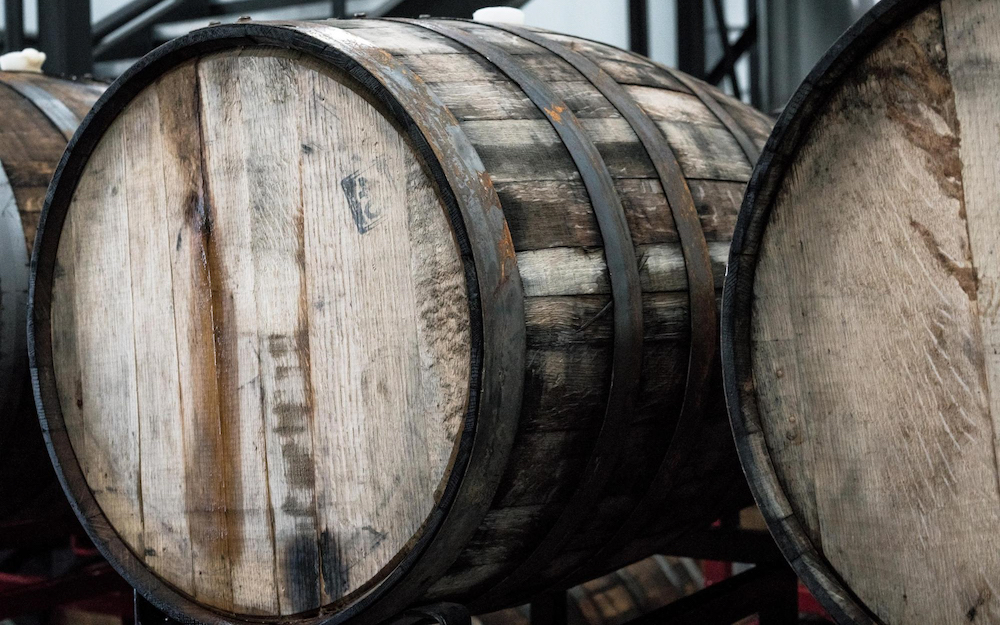
How important is quality control?
Finding the sweet spot in the ageing process is the key to creating a high quality product. In whiskey production, every barrel will taste slightly different from the next. This is also the case when it comes to ageing coffee.
Craig also notes that there isn’t a sole supplier of barrels, meaning that each barrel he acquires to age his cold brew needs to be checked. Craig explains how they determine the right amount of time for the ageing process.
“It depends on a lot of factors, and the barrel is a big factor for us,” he says. “We assess the barrels when they come in. Some of them could be a bit dry, and some of them will have a litre of whiskey in them from when they were emptied and given straight to us.”
In fact, one can get ahead of this process by simply looking at the barrels when they arrive and testing a few basic things. For instance, Craig tells me that it’s important to check the barrels for excess moisture, to make sure they smell suitable, and ensure that there’s no mould growth.
“We have three levels of barrels and we tend to age them for different times,” he explains. “It could be anywhere from six weeks up to three months in those barrels, depending on the quality.”
He adds that a top-rated barrel will require less time to impart its flavour, while a lower-quality barrel needs longer.
Finally, he says that once the time is up, the coffees are blended; a process which draws many parallels with whiskey production.
Craig explains that blending coffees from different barrels allows for a more consistent product, and gives production staff greater control over how their aged cold brew tastes.
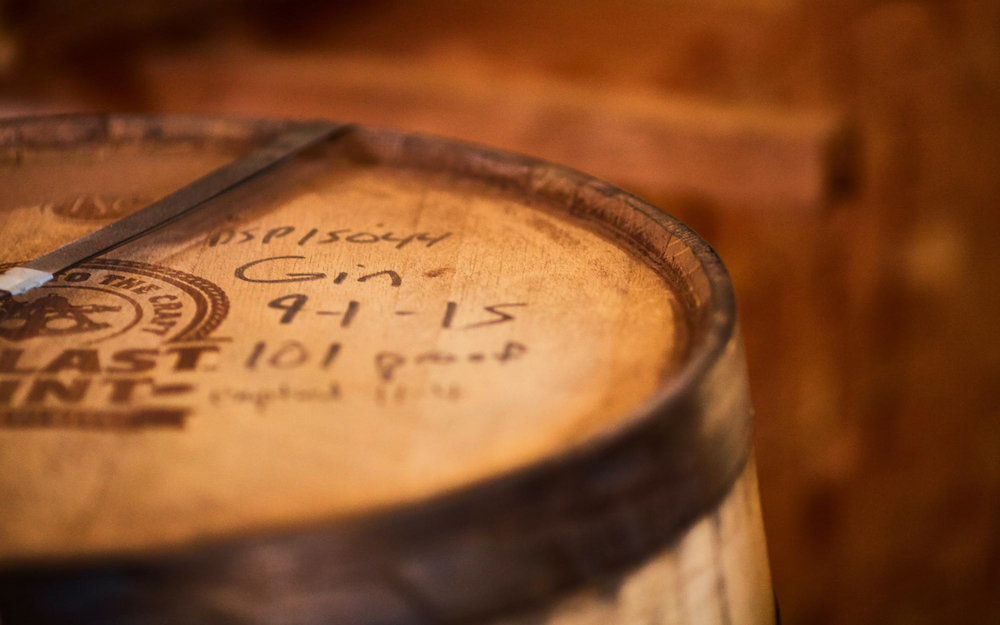
What about using other vessels?
We know that there are parallels to draw between whiskey and coffee production, and the sweetness and smokiness of the former makes it a good match for experimenting with barrel ageing.
But what about other vessels?
We are now starting to see other examples emerge. In 2018, Starbucks Reserve, which had previously launched a whiskey barrel-aged cold brew, released a gin barrel-aged cold brew. The brand sourced its gin barrels from Big Gin Distillery in Seattle and used a Rwandan micro lot for the cold brew.
Starbucks uses a slightly different approach to add flavours into the coffee. The company adds green coffee directly into the gin barrel, and regularly rotates it to ensure an even distribution of flavour. Once infused, the coffee is then roasted.
“Over several weeks, the beans are carefully hand-rotated in the barrel and absorb notes of pepper, cardamom, and vanilla from the gin and barrel char,” the company’s website says. “They are then small-batch roasted by Starbucks master roasters, a process which burns off the alcohol but retains the aroma and flavour from the barrel-ageing.”
The result, it says, is a “lively coffee” that boasts a warm botanical profile. This combination “highlights its bright citrus notes and caramel finish”.
With the added gin flavour, the cold brew can then be paired with tonic water and citrus to create an even more refreshing drink.
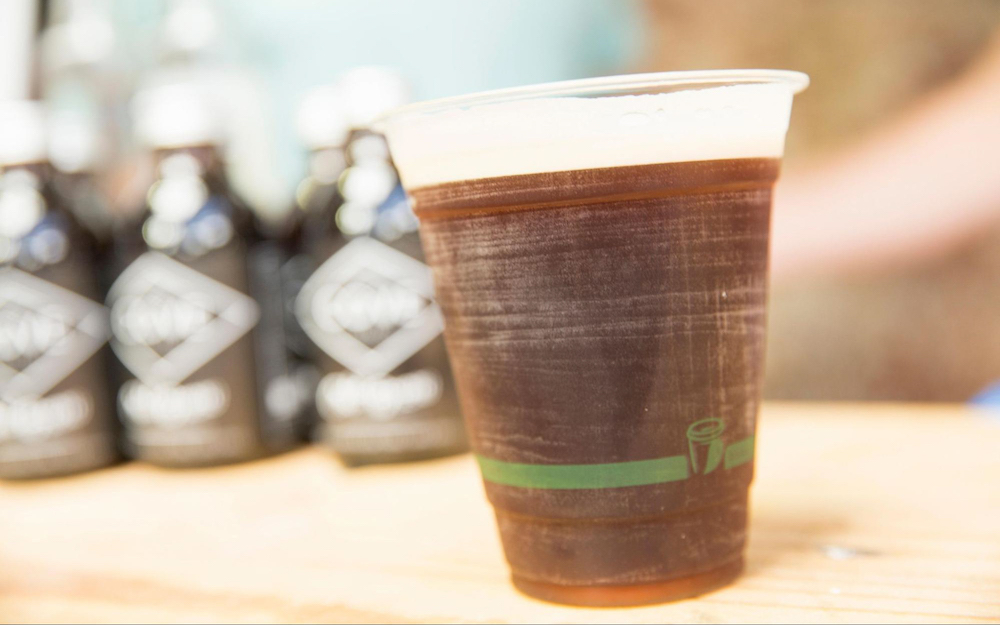
Cold brew has rapidly become one of the most popular coffee beverage categories out there. It’s easy to produce and has an approachable flavour profile, which has helped it to become popular with consumers around the world. Furthermore, when prepared as a concentrate, it is an incredibly versatile option for both baristas and coffee shops.
As such, its popularity and utility mean that it’s no surprise that many in the industry have been experimenting with the drink. Barrel ageing is clearly one way that cold brew is evolving, leveraging residual flavours to create a niche, experimental product.
And while whiskey barrel ageing is certainly popular, it appears that this may actually open up other paths to age or infuse cold brew. Who knows – in the near future, we might see all kinds of unconventional and experimental cold brew options on coffee shop menus.
Enjoyed this? Then read our article on flash brew coffee.
Perfect Daily Grind
Want to read more articles like this? Sign up for our newsletter!
The post How does ageing cold brew coffee affect its flavour? appeared first on Perfect Daily Grind.
By: Josef MottTitle: How does ageing cold brew coffee affect its flavour?
Sourced From: perfectdailygrind.com/2022/07/how-does-ageing-cold-brew-affect-flavour/
Published Date: Tue, 05 Jul 2022 05:27:00 +0000
Did you miss our previous article...
https://coffeecutie.com/cold-drip/best-coffee-for-a-cold-brew



